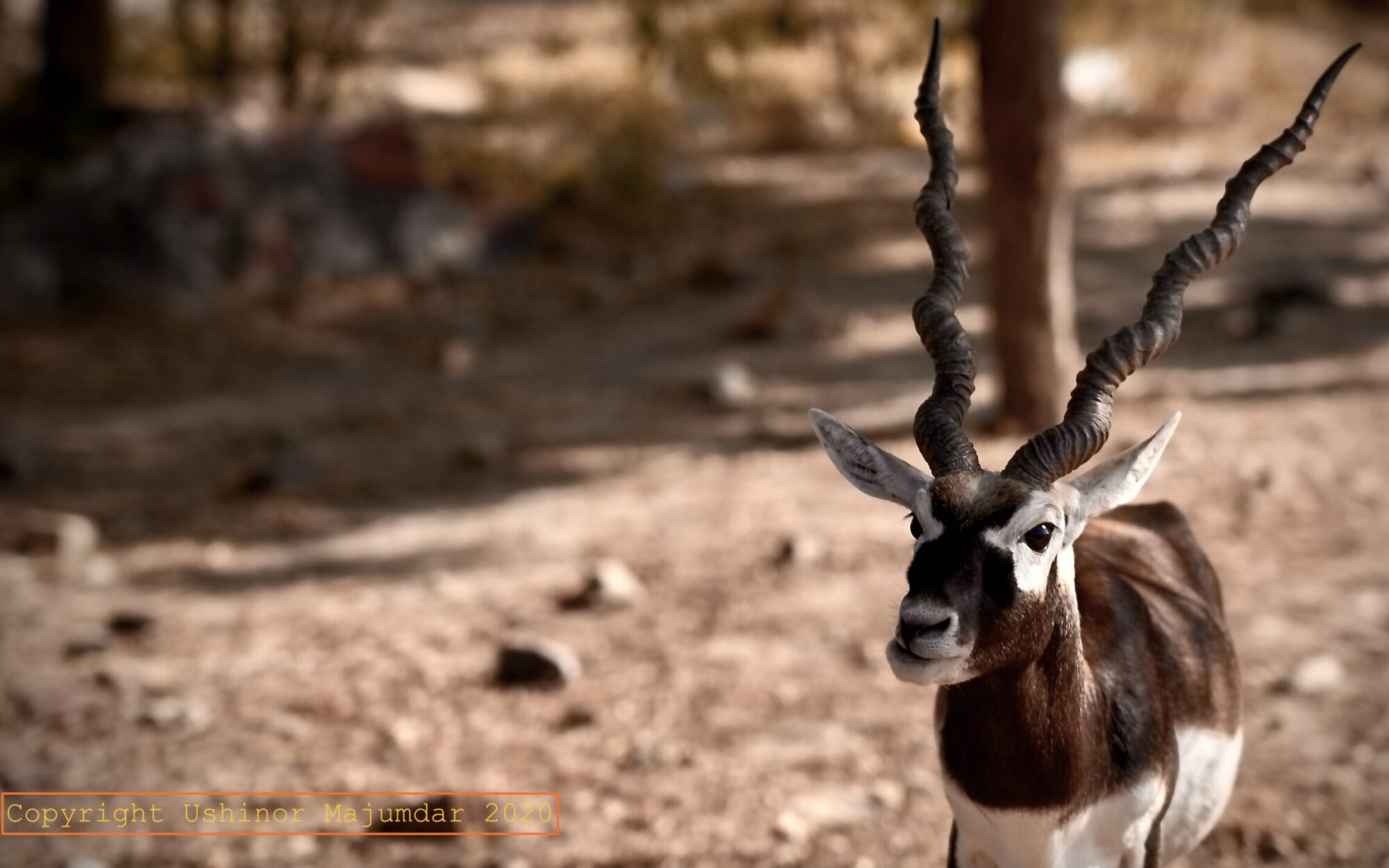From the personal archives of Captain (Retd) Parimal Kumar Ghosh (retired as commandant, BSF) whom Major Ziaur Rahman named ‘Captain Ali’
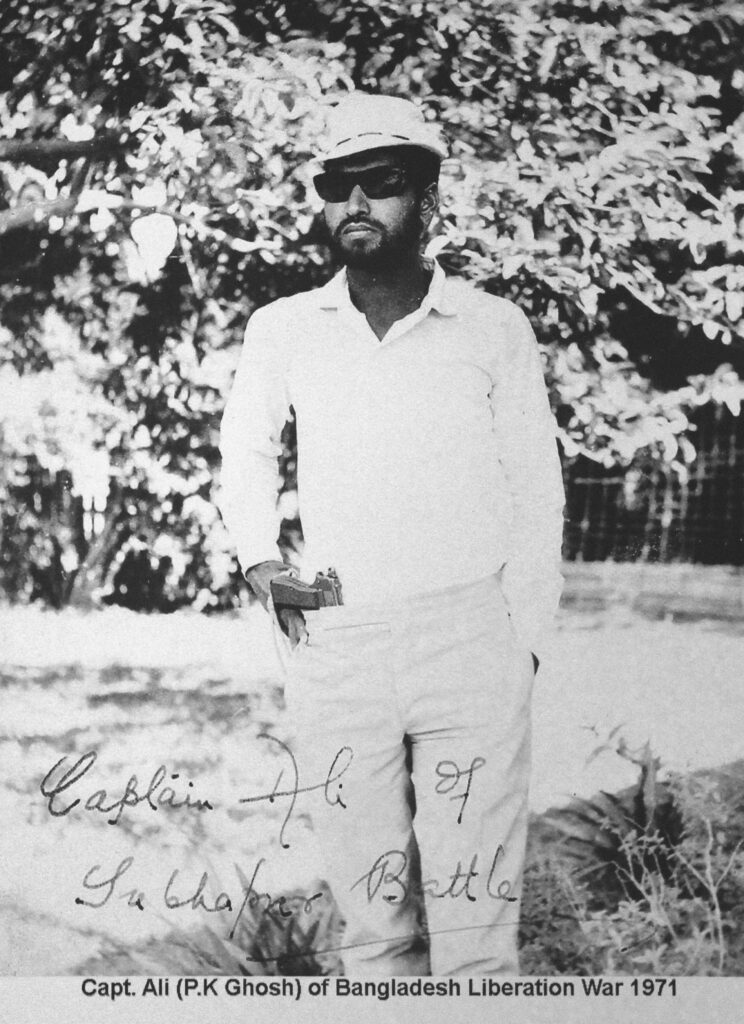
This is a photo of ‘Captain Ali’ during the Bangladesh Liberation War. He adopted this look to lead clandestine missions along with the East Pakistani guerrillas.
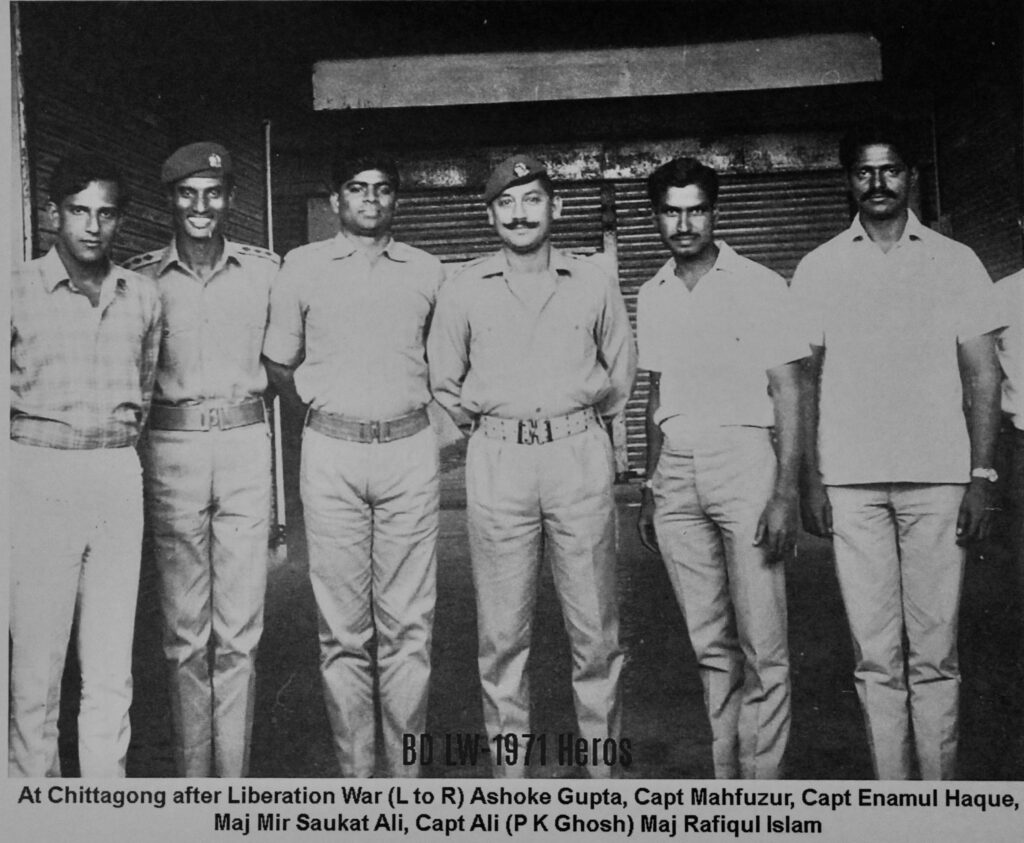
This photo was taken after the India-Pakistan War when BSF officers P.K. Ghosh and Ashoke Gupta visited the Mukti Bahini officers they had fought alongside during the Bangladesh Liberation War
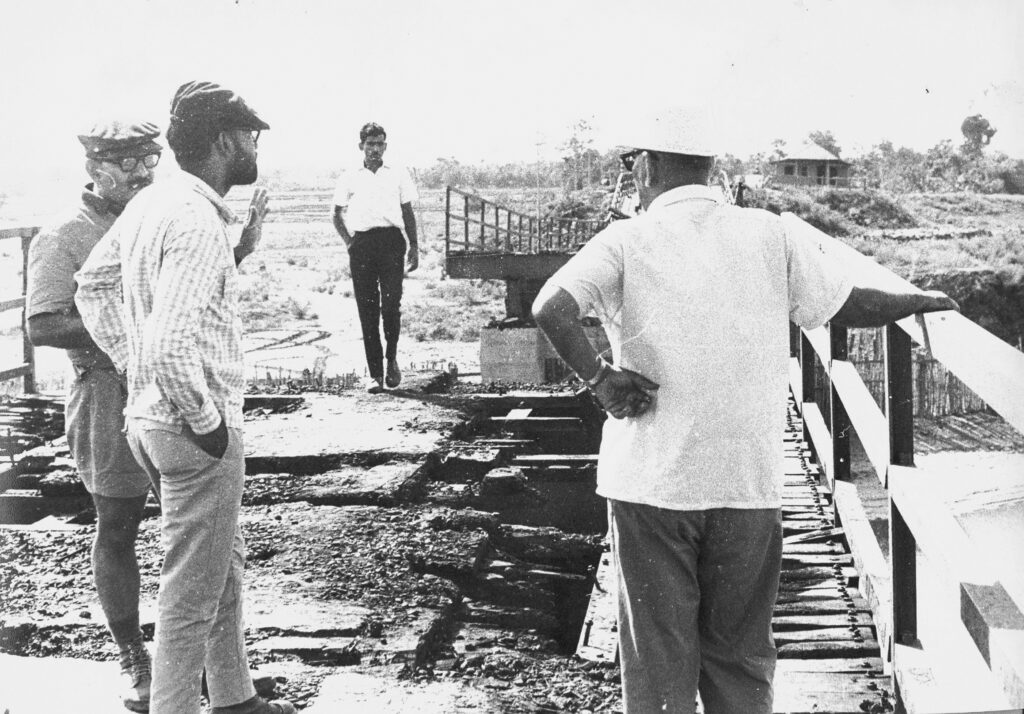
Asstt Comdt Ghosh and Maj Zia collaborated during the first phase of the Bangladesh Liberation War. During that period, they blew up several bridges to stall the Pakistan Army from re-claiming liberated zones in East Pakistan. Brigadier Pande was operational in-charge of the clandestine missions from Tripura
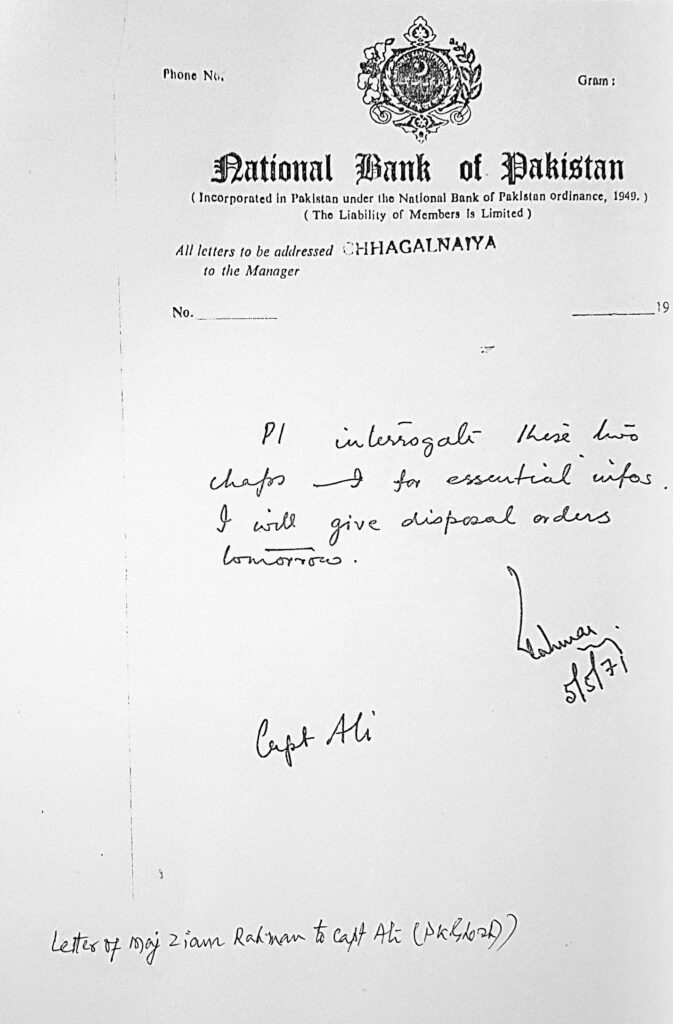
Major Zia and Asstt Comdt Ghosh communicated through hand-written notes, some of them have been preserved by the latter.
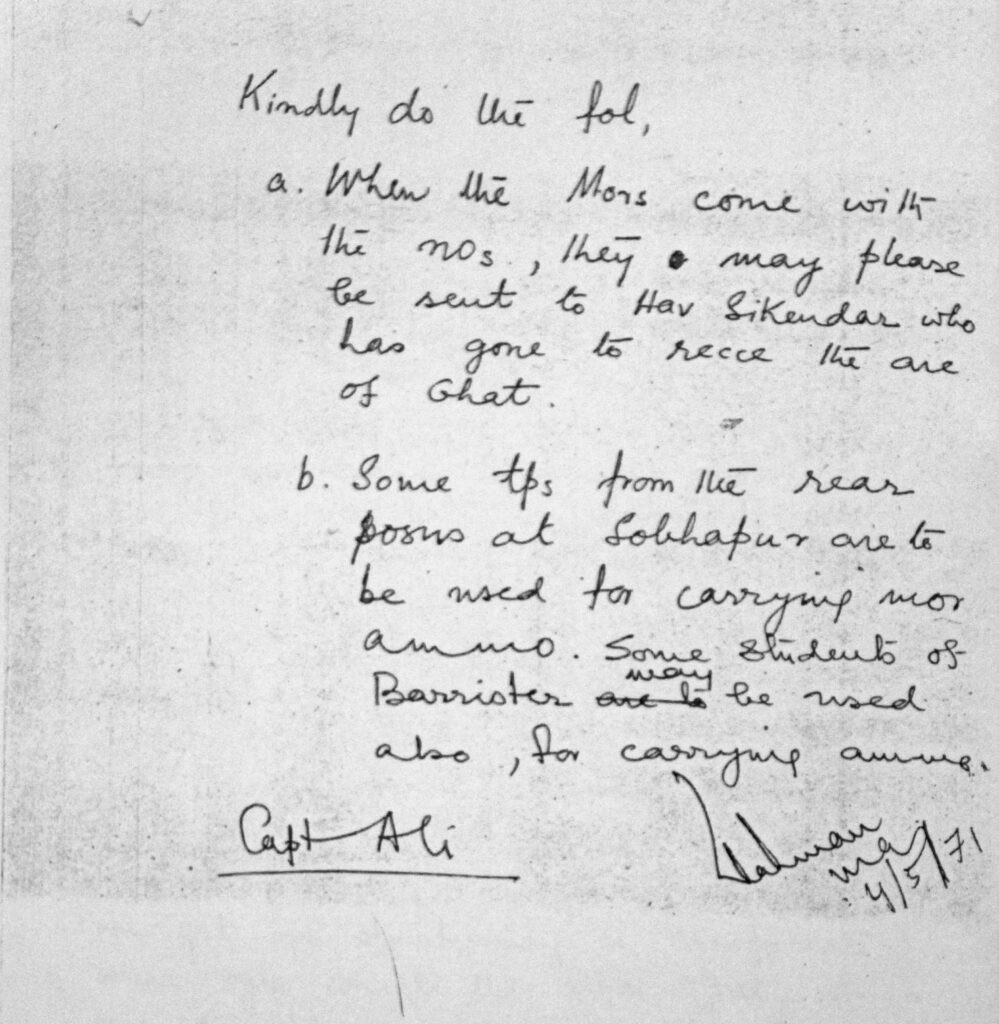
Another handwritten note from Major Zia to Asstt Comdt Ghosh with instructions. The date and contents indicate that this pertains to the Battales of Subhapur.
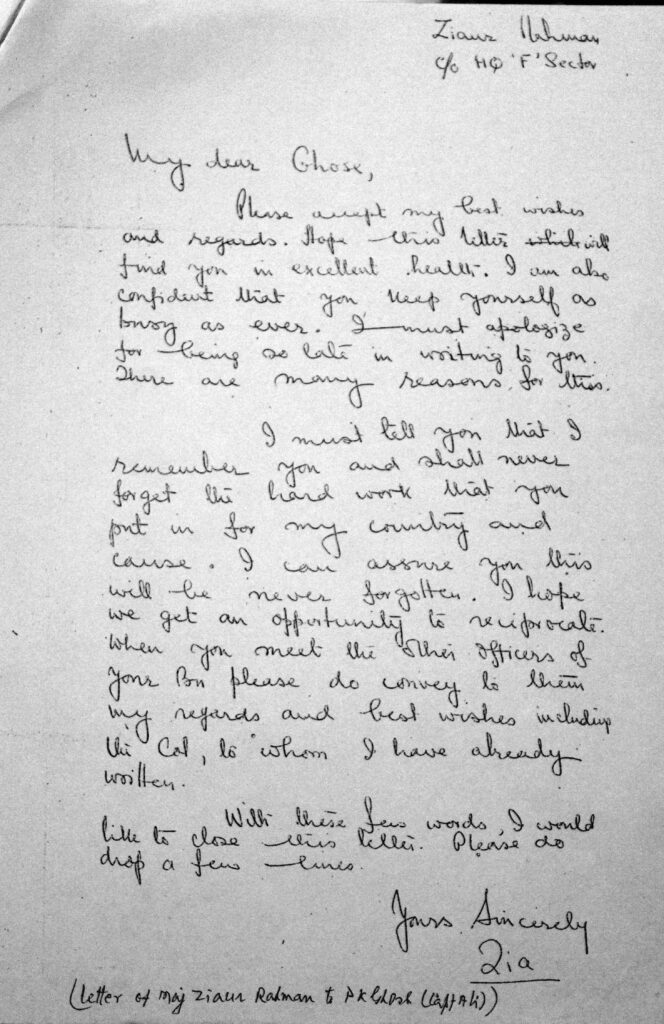
This note is from a later date. Major Zia moved to northern East Pakistan after the July 1971 conference of the Bangladesh Forces. Major Zia’s address shows that the letter was sent while the Bangladesh Liberation War was still in progress.
It is possibly after the July 1971 conference of the Bangladesh Forces, following which Major Zia had moved to Tura in Meghalaya to raise ‘Z Force’, the first full brigade of the Bangladesh Forces.

A photo of Asst Comdt Ghosh with fellow-officers of the BSF and the Indian Army brigade commander leading them, Brigadier Anand Swaroop, after they overran Chittagong, a day after the surrender of Dacca.
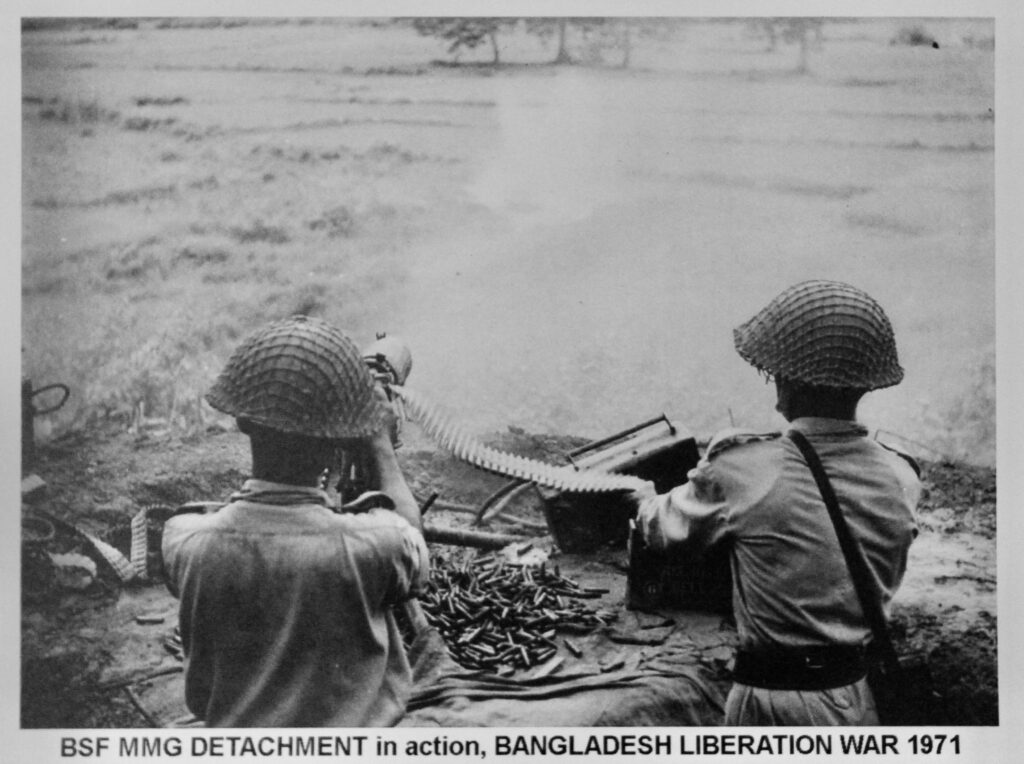
A photo of Asst Comdt Ghosh’s men in action with a medium machine gun from 1971, at the India-East Pakistan border in South Tripura
